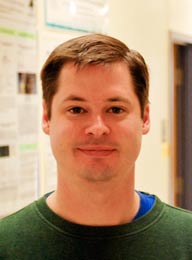

Keith A. Lidke received his PhD from the University of Minnesota in 2002. His dissertation work was in the area of low temperature physics in which he studied scattering from superfluid helium four. From 2002 to 2005 he worked as a post-doctoral fellow in the laboratory of Thomas M. Jovin, located at the Max Planck Institute for Biophysical Chemistry, Goettingen, Germany. There, he worked on developing several new techniques for fluorescence microscopy including programmable array microscopy, lifetime imaging, single quantum dot tracking, and superresolution using blinking probes. After a short post-doc at Sandia National Laboratories (2006-2007), he joined the Physics and Astronomy department at the University of New Mexico. He is a member of the UNM Cancer Center and the 'The New Mexico Center for Spatiotmperal Modeling of Cell Signaling (STMC)', an NIH center for systems biology, for which he directs the center's superresolution technology core.